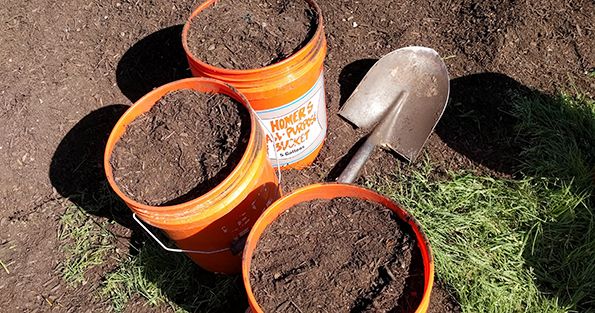According to experts, most habits follow the same 3-step pattern: “reminder, routine, reward.” If the reward is positive, then it is more likely you will repeat the routine the next time the reminder comes around. Whether you are a new or seasoned gardener, forming a few good gardening habits is important. One of the most important habits is fertilization. The habit of fertilization often follows this 3-step pattern: 1) you are reminded it is time to plant in your garden; 2) you follow a routine of fertilizing when you plant; and 3) you reap the delicious rewards of a successful, healthy garden. In order to help you form this gardening habit, we will share a quick and dirty overview of several types of organic fertilizers, their benefits, and how to apply them in your garden this spring.

How to Fertilize Your Garden this Spring
Bianca Bidiuc Peterson, Grow Local Program Manager
Compost
- Compost provides plants with nutrients such as nitrogen, phosphorous, and potassium as well as micronutrients such as manganese, copper, iron, and zinc
- You can make your own compost at home in a three-bin system, piles, or tumbler or purchase it at a local nursery
- Before planting, add several inches of compost and mix it into your garden soil
Chicken or rabbit manure
- Chicken and rabbit manure is high in nitrogen and also contains phosphorous and potassium
- Contact a local farm to find chicken or rabbit manure
- Both chicken and rabbit manure must first be composted or aged with carbon-rich materials before adding to your garden in order to prevent “burning” the plant or being exposed to harmful bacteria
- When planting, spread a layer over the garden area and work into the soil
Worm castings
- Worm castings are one of the richest natural fertilizers and contain a plethora of nutrients and minerals such as concentrated nitrates, phosphorus, magnesium, potassium and calcium as well as active bacteria
- Create a simple vermicomposting system at home or purchase worm castings at a local nursery
- Sprinkle worm castings around the base of plants, lightly mixing it into the soil, then water the area
Bat dung (guano)
- Bat guano contains nitrogen, phosphorous, and potassium
- Purchase bat guano at a local nursery
- Add bat guano directly to your soil or create a bat guano tea by soaking it overnight (1 cup guano: 1 gallon water), straining, and applying to the soil around the plant to feed the roots
Fish emulsion and liquefied seaweed
- Fish emulsion is high in nitrogen, and liquefied seaweed contains many trace elements of magnesium, potassium, zinc, iron, and nitrogen
- Both fertilizers can be purchased at a local nursery; they come in the form of a thick concentrate that requires dilution
- To dilute, mix half an ounce of fish emulsion to 1 gallon of water; mix one to two and a half ounces of liquefied seaweed to 1 gallon of water
- Water the soil around the plants with the mixtures
With this knowledge of the benefits of different ways to fertilize, we hope that your garden thrives in order to produce an abundance of healthy food this season.
